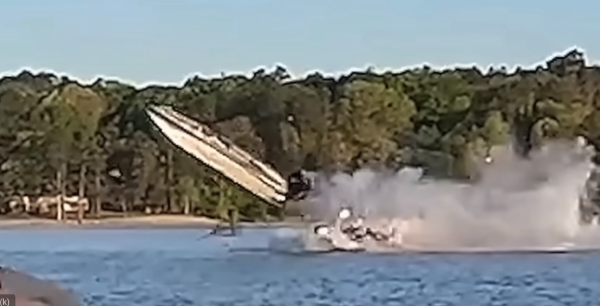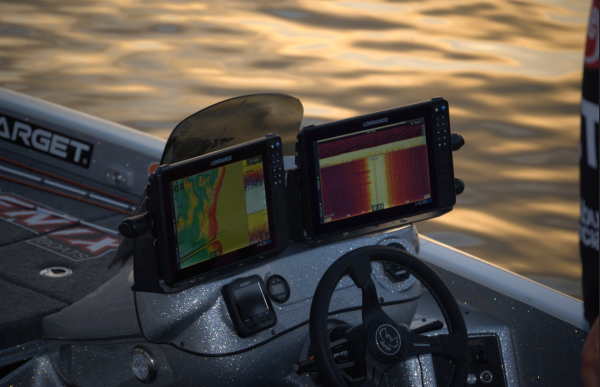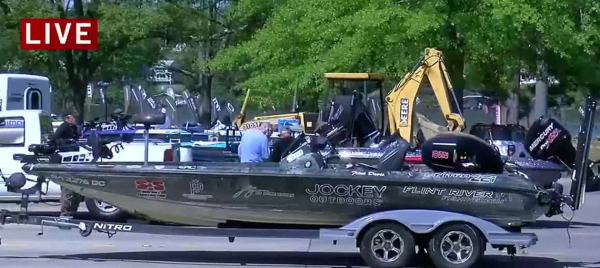
The second morning of the Major League Fishing Tackle Warehouse Invitational on Alabama’s Smith Lake dawned calm and clear. Yet that spring morning of perfect visibility ended in tragedy, leaving three men dead and others injured in a boat collision that has shaken the professional bass fishing community.
Investigators with the Alabama Law Enforcement Agency (ALEA) found no indication of fog, mist, or poor visibility that day. Instead, their report listed speed and operator error as key contributing factors in the crash.
At 7:03 a.m. on April 16, as competitors fanned out across the lake, that early calm was shattered when a Nitro bass boat driven by young professional angler Flint Davis, 22, of Georgia, collided with a 23‑foot center-console fishing boat near Miller Flats. According to ALEA’s findings, Davis’s boat struck the starboard front of the other vessel, which was a striper fishing charter, moving slowly between a hazard buoy and the shoreline, reportedly under trolling-motor power.
Three men on board the center-console — Joe Broom, 58, of Altoona; John “Kelly” Clark, 44, of Cullman; and Jeffrey Little, 62, of Mississippi — were fatally injured. Two other occupants were seriously hurt. Davis was also injured.
Authorities later stated that weather and visibility were not factors in the collision. The water was relatively calm, conditions were clear, and no other extraordinary lake traffic was reported.
Last month, a Cullman County grand jury returned indictments charging Davis with three counts of manslaughter, two counts of first-degree assault, and several boating-related misdemeanors. The indictment alleges reckless operation and failure to observe navigational rules, among other violations.
Davis has pleaded not guilty.
Cullman County District Attorney Champ Crocker said in announcing the charges that the case underscores “the grave responsibility that comes with operating powerful vessels at high speed.” Crocker added that the grand jury recommended tournament organizers require participants to show proof of boating safety education and to review safety protocols before events.
In response, Major League Fishing canceled the remainder of that Smith Lake tournament. Families of the deceased have since filed lawsuits naming Davis, the event’s organizer, and other parties, alleging various forms of negligence. Those civil cases remain pending.

Davis’s attorney, Tommy Spina, said the young angler remains deeply remorseful and continues to cooperate fully with investigators. He emphasized that toxicology reports found no alcohol or drug involvement.
For longtime anglers, the official findings are sobering. With no fog or weather issues to blame, the tragedy raises a question many in the sport have quietly pondered: What went wrong?
Though the answer is likely to be months in coming, one possibility might be the increasing size of big screen gps/sonar mounted directly on the console, cutting forward visibility to a minimum. Many tournament boats have two screens at the console, so tall that anglers can barely see over the tops of them looking forward.
And of course, the routine high speeds of tournament bass boats.
Modern bass boats routinely exceed 70 miles per hour, a reality that has transformed tournament fishing. Competitors can now reach distant fishing spots in minutes — but that speed leaves almost no margin for error. At 60 miles per hour, a boat covers roughly 90 feet per second. A momentary glance at GPS/sonar can consume those seconds and erase the chance to react.
From a distance, the spectacle of boats racing off at dawn looks exhilarating — but on the water, it can be unforgiving.
Boating collisions remain a leading cause of serious and fatal accidents nationwide, according to U.S. Coast Guard data. Many occur when faster vessels approach slower craft or stationary boats near shorelines or submerged structure. The risk intensifies in competitive conditions, where anglers race to reach the best spots first.
Past tragedies have prompted similar safety discussions. A fatal collision at a 2010 regional tournament on Kentucky’s Barkley Lake sparked industry calls for pre-run safety briefings and stronger enforcement of speed and safety rules. Despite these efforts, oversight varies widely between tournament organizations.

On Smith Lake, investigators determined that the struck vessel was positioned between a hazard buoy and the shoreline — an area that some operators might perceive as avoidable or off limits for high-speed running but that can appear deceptively open from a distance. Whether Davis misjudged that section or failed to see the other boat in time remains at the heart of both the criminal and civil proceedings. Prosecutors allege his speed of roughly 67 miles per hour in that zone constituted reckless operation; his defense maintains he was acting within competitive norms.
Major League Fishing has stated that it will review its safety and operational policies after the court cases conclude. Other major tournament circuits are reportedly reexamining participant training and certification requirements.
The April collision has become more than a criminal case; it has sparked broader debate about how the sport balances competition and caution. The conditions that morning were nearly perfect — clear air, calm water, and high visibility. Yet three lives were lost and many others changed permanently.
As in driving ashore, one of the first cautions always has to be that distracted driving, for any reason, can lead to tragic results. That may or may not have been a factor here—but it’s left now for the attorneys to sort out.
— Frank Sargeant
Frankmako1@gmail.com